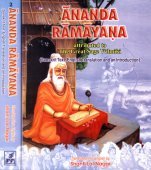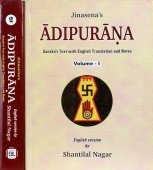Oriya, Oriyā: 2 definitions
Introduction:
Oriya means something in Jainism, Prakrit, the history of ancient India. If you want to know the exact meaning, history, etymology or English translation of this term then check out the descriptions on this page. Add your comment or reference to a book if you want to contribute to this summary article.
In Jainism
General definition (in Jainism)
Source: academia.edu: Tessitori Collection IOriyā (ओरिया) refers to one of the various Jain sacred places found at Abu, according to the Arbudācalacaityaparipāṭī by Somadevasūri (dealing with Sacred places in Jain literature), which is included in the collection of manuscripts at the ‘Vincenzo Joppi’ library, collected by Luigi Pio Tessitori during his visit to Rajasthan between 1914 and 1919.—The Arbudācala-caityaparipāṭī represents a praise of the holiness of Abu as a Jain sacred place, and deals with the various Jain temples found at Abu. [For example:] [...] Oriyā, here called Urīhāsari, as having a Neminātha temple and image (differently in Holy Abu 139ff.).

Jainism is an Indian religion of Dharma whose doctrine revolves around harmlessness (ahimsa) towards every living being. The two major branches (Digambara and Svetambara) of Jainism stimulate self-control (or, shramana, ‘self-reliance’) and spiritual development through a path of peace for the soul to progess to the ultimate goal.
India history and geography
Source: Cologne Digital Sanskrit Dictionaries: Indian Epigraphical GlossaryOriya.—same as Od8iyā. Note: oriya is defined in the “Indian epigraphical glossary” as it can be found on ancient inscriptions commonly written in Sanskrit, Prakrit or Dravidian languages.

The history of India traces the identification of countries, villages, towns and other regions of India, as well as mythology, zoology, royal dynasties, rulers, tribes, local festivities and traditions and regional languages. Ancient India enjoyed religious freedom and encourages the path of Dharma, a concept common to Buddhism, Hinduism, and Jainism.
See also (Relevant definitions)
Ends with (+6): Anachoriya, Anaichoriya, Boriya, Chyunke-van-toriya, Dakshina-koriya, Dhanoriya, Dhoriya, Dindoriya, Doriya, Gadebhingoriya, Gariyabhingoriya, Ghoriya, Gonoriya, Gonyooriya, Gundoriya, Jhoriya, Khoriya, Koriya, Moriya, Poriya.
Full-text (+398): Urihasari, Gitaprakasha, Kakharu, Ogni, O, Saireyaka, Nagophenia, Krishnochuda, Avisha, Nandikattu, Kottakunda, Kanigiri, Kashi, Vinayaka, Seshai, Chompa, Rela, Nila, Pooreti, Javadi.
Relevant text
Search found 11 books and stories containing Oriya, Oriyā; (plurals include: Oriyas, Oriyās). You can also click to the full overview containing English textual excerpts. Below are direct links for the most relevant articles:
The Problem of Linguistic Minorities < [September 1946]
Landmarks in Oriya Literature < [October 1951]
The Beginnings of Oriya < [April 1939]
Chaitanya Bhagavata (by Bhumipati Dāsa)
Verse 3.2.302 < [Chapter 2 - Description of the Lord’s Travel Through Bhuvaneśvara and Other Placesto Jagannātha Purī]
Puppetry in Assam (by Gitali Saikia)
Puppetry in India (d): Shadow puppet < [Chapter 2]
Puppetry as a Folk Drama < [Chapter 2]
A History of Indian Philosophy Volume 4 (by Surendranath Dasgupta)
Part 1 - Caitanya’s Biographers < [Chapter XXXII - Caitanya and his Followers]
Chaitanya's Life and Teachings (by Krishna-das Kaviraj)
Chapter XIV - The Return to Bengal
Chapter XXVI - The Master's love-sickness for Krishna; His visions and transports of bhakti
Srila Gurudeva (The Supreme Treasure) (by Swami Bhaktivedanta Madhava Maharaja)
Further Manifestations of Illness < [Chapter 2.19 - The Concluding Transcendental Pastimes]
Related products

